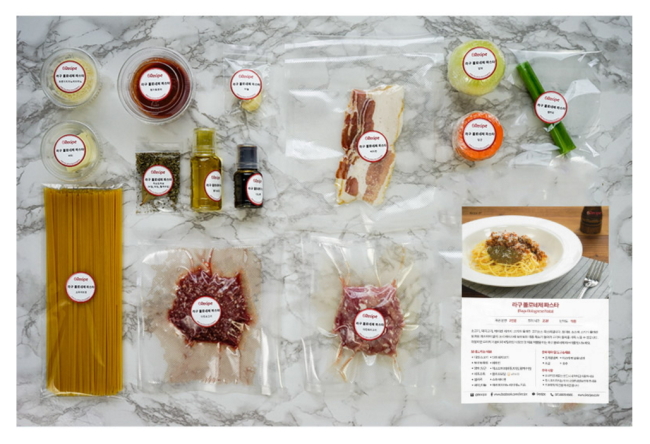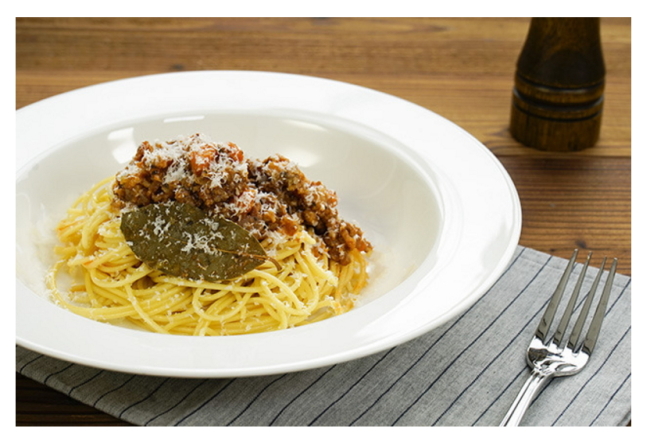[Weekender] For those who want restaurant-quality meals at home: semi-cooking food boxes
By Rumy DooPublished : Feb. 10, 2017 - 18:22
A rising culinary trend dubbed “semi-home-cooking” delivers to a very specific consumer base: people who are wary of eating out but do not want the hassle of cooking -- and cleaning up -- in their own kitchens.
A number of services have begun selling “food boxes,” where prepped ingredients -- prewashed, peeled, sliced and diced -- and sauces are delivered straight to their door, often on the day of order, for hassle-free cooking.
A box for the Korean staple doenjang jjigae from food box service My Chef, for example, includes chopped zucchini, onion, tofu and spring onion, broth and soybean paste seasoning. Throw all the ingredients into a pot, boil and in 10 minutes, a hot meal for two is complete.
A number of services have begun selling “food boxes,” where prepped ingredients -- prewashed, peeled, sliced and diced -- and sauces are delivered straight to their door, often on the day of order, for hassle-free cooking.
A box for the Korean staple doenjang jjigae from food box service My Chef, for example, includes chopped zucchini, onion, tofu and spring onion, broth and soybean paste seasoning. Throw all the ingredients into a pot, boil and in 10 minutes, a hot meal for two is complete.

Some brands, such as Precious Table (Sojunghan Siktak), have teamed up with restaurant franchises for easy-to-make kits that allow consumers to re-create the eateries’ signature menu items at home.
Health-conscious consumers say it’s reassuring to see exactly what goes into a dish and inspect the condition of produce and ingredients. Newlywed Kim Yeon-ji, who has been hosting a string of housewarming parties for family and friends for the past few months, says the boxes have allowed her to cook for her guests without the fear of messing up.
“Since all the ingredients are measured, I only need to put them together,” said the novice cook, who had never made a full meal before getting married. “The stress of shopping is gone. And there are no leftover ingredients.”
Food box service 6recipe, which opened last June, hopes to deliver diverse tastes to those living far away from bustling restaurant areas.

“We wanted to offer foods that aren’t easily accessible, but that people have always wanted to try,” said Choi Il-rok, one of the three co-owners of the company.
The website currently has seven items on its menu, including dishes like chicken tikka masala, a British-style curry that few restaurants in Korea offer. “We’re envisioning a new home-cooking trend. Our recipes aren’t too fancy or professional, but they’re a bit more special than your everyday meal.”
In Korea, delivery services offering ready-made food -- jajangmyeon (black bean sauce noodles), fried chicken, pizza and jokbal (pig’s feet) among the most common -- are nothing new. For a decade, services such as Home Meal and The Banchan have been delivering Korean side dishes such as namul (seasoned vegetables), which often require a multi-step cooking process, to homes.
The emerging food box trend positions itself somewhere between these existing services, mostly targeting 30- and 40-somethings who are health-conscious and wary of store-bought meals or preserved foods, but too busy to cook from scratch.
Lim Tae-woo, another co-owner of 6recipe, said he came up with the idea during his studies in England, where he found good meals too pricey and home-cooking too difficult.
“The number of one-person and two-person households is increasing,” said Choi. “But food services that meet this demand are still in short supply.”
How did food boxes fare?
The Korea Herald tried out a number of semi-home-cooking boxes, including a Korean menu of soy bean paste soup (6,400 won) and seasoned crab (9,200 won); a French menu of ratatouille and steamed pork (23,800 won); and Indian curry (23,800 won) from various brands.
Upsides
* The recipes were easy to follow. The amount of preparation needed varied from brand to brand -- with some services, no additional chopping was required. Other services provided ingredients in their original form.
* We could judge the freshness of the ingredients, usually prewashed. Vegetables were crisp and unbruised; meat was in good condition.
* The amount of seasoning can be adjusted. Those who need to monitor their sodium intake or have other dietary restrictions can do so.
* The number of dishes to wash was about half compared to cooking from scratch.
Downsides
* Delivery fees, especially if needed on the day of order, can be pricey, costing over 10,000 won. Menu prices vary, but less expensive options are available.
* Unlike the freshness of vegetables and meat, seafood was below peak freshness despite being packed in ice.
* The taste of the dishes varied from company to company. Some services delivered as they advertised -- a restaurant-quality meal could actually be re-created at home. Other services were not as tasty as an average homemade meal.
By Rumy Doo (doo@heraldcorp.com)







![[KH Explains] Hyundai's full hybrid edge to pay off amid slow transition to pure EVs](http://res.heraldm.com/phpwas/restmb_idxmake.php?idx=644&simg=/content/image/2024/04/18/20240418050645_0.jpg&u=20240419100350)






![[From the Scene] Monks, Buddhists hail return of remains of Buddhas](http://res.heraldm.com/phpwas/restmb_idxmake.php?idx=652&simg=/content/image/2024/04/19/20240419050617_0.jpg&u=20240419175937)

![[KH Explains] Hyundai's full hybrid edge to pay off amid slow transition to pure EVs](http://res.heraldm.com/phpwas/restmb_idxmake.php?idx=652&simg=/content/image/2024/04/18/20240418050645_0.jpg&u=20240419100350)

![[Today’s K-pop] Illit drops debut single remix](http://res.heraldm.com/phpwas/restmb_idxmake.php?idx=642&simg=/content/image/2024/04/19/20240419050612_0.jpg&u=)